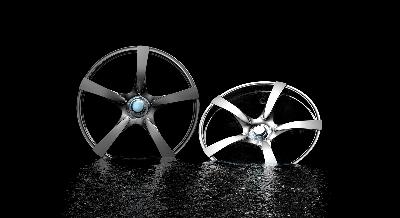
Magnesium rims are hallowed as the classic American racing wheel. Mag wheels on the street evoke the speed, grace, and excitement of the racetrack and offer an exciting look to cars of all makes and models. When considering vehicles with aftermarket parts or when performing vehicle care, it may become necessary to confidently identify magnesium rims. Since powder-coating and other finishes may prevent a visual identification, there are a few basic ways of verifying the metal as magnesium.
Try the vinegar test. Drop a little bit of 5% acidity white vinegar on the back of the rim. If the vinegar bubbles, the rim is magnesium.
Scrape some of the finish with a razor blade. If the vinegar test seems insubstantial (it isn't, but some people like to be triple sure), scrape some of the finish off the back of the rim. Magnesium will appear silver in color. The cuttings or chips will be dusty or flaky. By comparison, aluminum will show a whiter color when scraped and the chips will be gummy or soft.
Grind the metal. If scraping is done alone, there may not be a ready comparison or frame of reference to feel confident in the test. If there is an area large enough that grinding will not ruin the appearance of the rim (this requires a small grinder, too), put on the goggles and grind the metal. Magnesium often squeals when pressure is applied, because it is a hard metal.
Test the density. Density is specific and constant, so any size sample will work to test density. Determine the mass of the sample in grams. Drop the sample in a beaker of water to determine the volume of the sample with a water-displacement test. Divide mass by volume. The density of magnesium is 1.74. By comparison, aluminum's density is 2.7.